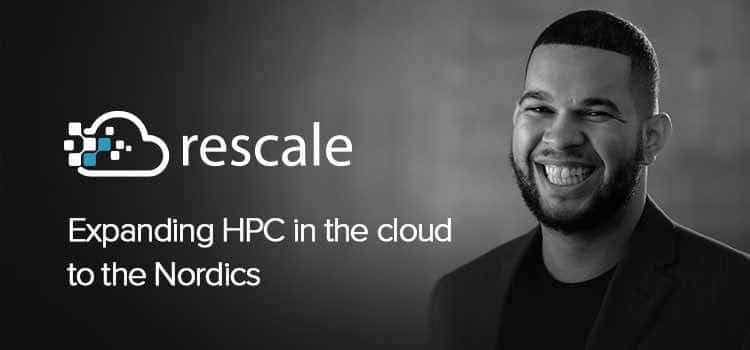2020, the ultimate test of business flexibility
How does a company pivot from manufacturing vehicles (Tesla) to ventilators, or from personal computers (Apple) to personal protective equipment (PPE)? Many firms across a spectrum of industries have answered the call to pivot from their existing business models to focus on solutions that combat COVID-19 in some form. For some, this means completely retooling production lines to simulate then manufacture entirely different products. While particularly important to global health right now, R&D flexibility is generally a strategic advantage. So what is a key differentiator among the most adaptable and innovative R&D organizations? If you guessed computing power you would be on the right track but there is more to the story.
Non-healthcare company innovators from aerospace to automotive demonstrated impressive feats of flexibility by designing and manufacturing new products to alleviate the shortage of ventilators (CAE, NASA) and PPE (Ford, Volkswagen). Pivoting existing computer-aided design (CAD) and engineering (CAE) tools to new simulation applications, data types, and workloads poses a challenge for many companies who rely on fixed infrastructure. Homogeneous computing architectures do not stand the tests of time and variation in simulation needs. The emergence of flexible, heterogeneous HPC stacks are giving a leg up to companies that adopt them, allowing them to quickly get answers to new engineering questions and scale up with the best architecture for the job.
“The ability to quickly and successfully pivot has a lot to do with each manufacturer’s decision to invest in digital technologies. Digital transformation including the streamlining of core applications and the adoption of market facing solutions is helping manufacturers rapidly mobilize and alternate their production output to much-needed items, including ventilators.” Todd Rovak, Global Head of Innovation and Strategy at Capgemini Invent, Industry Week
Whether developing new drugs or designing ventilation systems (Dassault) for ICU hospitals, time is of the essence to develop a viable product that passes the regulatory approvals necessary to begin manufacturing. For example, even with “priority” treatments, accelerated FDA reviews can be as long as 6 months, with standard approvals taking 10 months or longer (Drugwatch). From design, to testing and manufacturing, every stage of getting a new medical treatment to the market is subject to stringent review. In order “to inform study designs and to optimize dose selection” for patients, the FDA has recommended the use of HPC modeling and simulation which can also significantly reduce the extent of wet lab testing and risks to trial patients (FDA). Even in the early stages of its adoption in the medical industry, HPC was credited for 50% faster product development cycles and time-to-market, with 97% of users claiming HPC is “indispensable” to their business (Council on Competitiveness).
Since those early days, big strides have been made in the architectures and applications of computational discovery and simulation for the medical field. In applications of computer-aided drug design (CADD), HPC is being used in “methods such as structural refinement, molecular docking, and virtual screening.” But on fixed, constrained infrastructures, these computationally intense and distinct applications will continue to be a “bottleneck” for scientists (Taylor and Francis Group).
Fixed compute infrastructure with predefined architectures are designed and deployed with a limited number of possible applications and workflows under consideration. Though on-premise infrastructure from the supercomputing era works well for the intended, well-planned, specific purpose, these compute architectures are not well suited for agility when the organization’s priority and strategy shifts. For example, if a company intends to pivot to simulate drug development for COVID-19 using applications that utilize specialized hardware acceleration tools like GPUs, they won’t be able to do so if their fixed infrastructure does not include such resources. Conversely, an organization’s infrastructure built for CFD applications may or may not be well suited to run molecular dynamics workflows.
HPC practitioners and their research teams have discovered that “drug discovery can greatly benefit from a diversity of HPC architectures, such as grid and cloud computing, the latter being the most adequate solution for drug discovery calculations. Cloud computing is a very cost effective solution to quickly access and exploit the required high computing power.” But deployment of these diverse architectures in the cloud requires an “understanding of computer architecture, parallel computing, and specific abilities of software management” which can stand in the way of their use. (Taylor and Francis Group)
Pioneering life science scientists and engineers use Rescale today to reap the benefits of diverse computing infrastructures and cloud flexibility. Navigating the variations of chemical compounds and device designs to find the most viable candidate requires cross-disciplinary simulations like molecular dynamics and CFD. Rescale helps scientists and engineers by automating the end-to-end selection, tuning, and deployment of the best infrastructure and software for the job. Having instant access to the world’s best infrastructure, pre-installed software with on-demand licensing, and virtually limitless compute capacity, can mean a significant acceleration in the time-to-answers for simulations across the entire R&D process.
In a recent interview with medical device entrepreneur Ben Hertzog, Managing Director of Hertzog Partners, describes the impact of simulation on bringing new devices to market:
“We have to find new ways to reduce innovation cycle time and the FDA is increasingly accepting of simulation and modeling as a part of the early datasets needed for approvals. So more than ever, simulation and the ability to get answers quickly is an important tool in the life science community. “
Today, Rescale manages complex HPC workflows for disruptors and market leaders in biotechnology, pharmaceutical, and medical device industries. These companies rely on Rescale to meet the diverse computing needs across multiple stages and entities involved in the R&D process. Additionally, the proliferation of data generated throughout the process of clinical trials requires ongoing computation to inform models. Rescale is flexible enough to handle sharp compute fluctuations and provides enterprise-grade controls and reporting across the organization. R&D leaders use Rescale to orchestrate collaboration between business units and more accurately track progress against key deadlines. This visibility can also provide deep simulation insight for responding to regulator’s questions, leading to easier, faster, and more reliable approvals.
Science and engineering’s use of advanced computing techniques will continue to push the boundaries of medical discoveries and patient outcomes. Advancement in computing has always shown promise, but with slowing gains from Moore’s law, innovators look to flexible platforms of open access to diverse resources that enable agile development cycles. Because breakthroughs require continuous testing and iteration on multiple therapy candidates then pivoting resources to the more viable ones, an integrated-cloud HPC platform is the best way to ensure architecture flexibility and readiness to scale up quickly. For the enterprise, a managed platform like Rescale ensures close oversight of business units’ budgeting, collaboration, and infrastructure performance. And for researchers and scientists, time is spent generating critical insights instead of troubleshooting applications and infrastructure best suited for their research, leading to better health outcomes, faster.
Rescale is a proud member of the Tech Against Covid Consortium which offers high performance computing resources available at no cost to engineers, scientists, and researchers fighting COVID-19. Through this initiative, the Rescale platform has enabled individuals, academic institutions, and major pharmaceutical companies to launch their novel solutions in the cloud at the scale they need. Current COVID-19 projects include genomics research for susceptibility, contagion-spread modeling, and multiple vaccine candidate development. While Rescale is excited to highlight the exceptional work being done on the medical front, the platform is also home to a variety of R&D from building safer autonomous vehicles and more accurate storm predictions. You can find more information on these use cases and many others at rescale.com.








